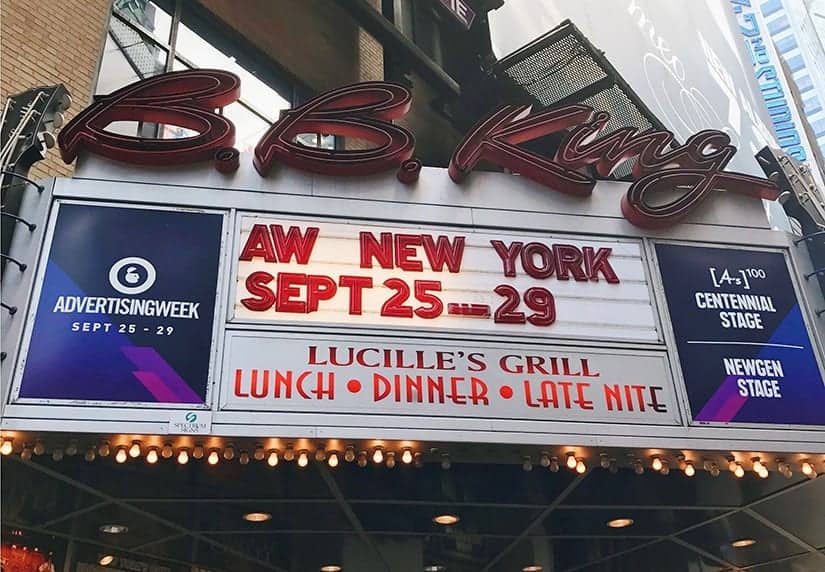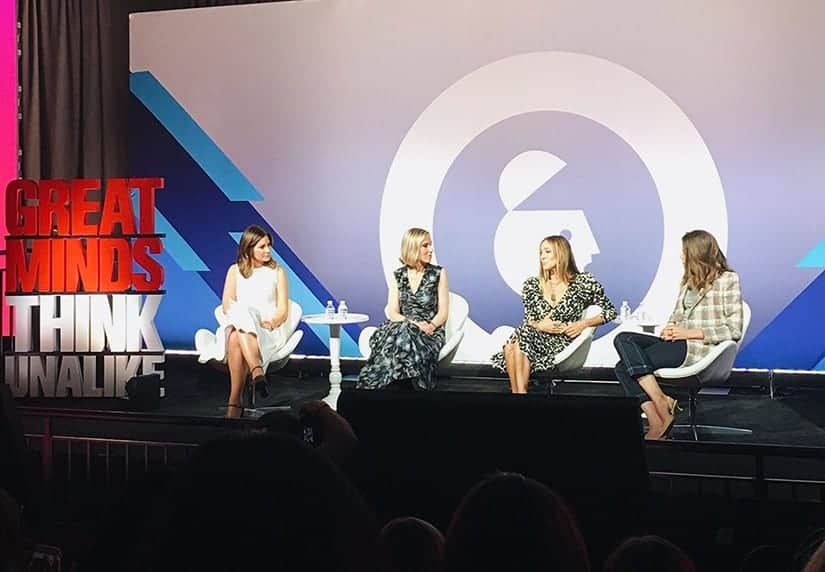Ad Week: Unlocking the Potential of Content Creation
The Beeby Clark+Meyler team was running all over Times Square during Advertising Week NY, attending dozens of sessions to hear from industry thought...

As we mentioned last week, our team made the most of Advertising Week NY. We were hopping from venue to venue around Times Square to hear about all things advertising from the industry’s top experts. Last week, we talked all about content. This week, we’re focusing on a buzzworthy topic: marketing to millennials.
It’s no surprise that advertisers are working to crack the code of millennial marketing, as statistics show that the audience size in the US lies somewhere between 75.6 million and 92.7 million. Now, there are some discrepancies over who qualifies as a millennial: according to the Census Bureau’s definition, anyone born between 1982-2000 is considered a millennial but according to Pew, millennials are born between 1981-1997. Either way, they represent at roughly a quarter of the nation’s population which is why they are such an important audience for advertisers.
In a session called, “Think Millennial,” speakers discussed how millennials build trust differently than past generations. In fact, 84 percent of millennials do not trust traditional advertising. Big brands no longer dominate market shares; small brands are drawing huge millennial audiences. In fact, research has shown that click through rates for smaller brands is continuously climbing. However, loyalty vs. reach is an ongoing battle for the millennial market. Not surprisingly, this is a discerning audience; 84 percent of millennials say user-generated content has at least some influence on what they buy. They want reliable branding and products, not something forced upon them. And, if a brand “stands for something” then they are even more likely to engage with it – and its content.
Following this session, I listened in on “Creating Content for Millennials.” After hearing more about the types of brands millennials want to engage with, it was a natural shift to discuss the types of content they prefer. The most important, powerful source of communication between millennials and brands is visual communication. This generation prefers to watch, not read. Millennials crave visual creativity, preferably in the form of memes, 20 second videos or small snippets. This is a benefit for brands who are marketing to millennials, as video content is an easier format for brands to convey their story, DNA and authenticity.
Another interesting finding related to millennial marketing is their desire for experiences. They are spending more money and time on what they feel are authentic experiences – preferably concerts. Yet, they prefer smaller, more intimate concerts and venues as opposed to sellout stadium events. These types of settings create a more personal, authentic experience for audiences, allowing artists to communicate easier with consumers. Brands can learn from this by providing more intimate, personal experiences for consumers to help encourage and strengthen communication, ultimately raising the value of a brand’s exchange with an audience.
Lastly, the panelists encouraged the audience to make mobile ads “that don’t suck.” Millennials don’t mind ads as much as other audiences, but they want appropriate, relevant ones. Invest in targeting to be sure that when you are marketing to millennials, your advertising is reaching not just the right audience, but the best one for your brand. Explore new opportunities for creativity and innovation to promote ads without being intrusive. For example, innovations within AI can help ensure that consumers who browsed for a product and purchased no longer receive annoying ads featuring that product.
For more information on marketing to millennials, check out our post on “How to Target Three Distinct Generations,” and see our guide to content marketing success!

The Beeby Clark+Meyler team was running all over Times Square during Advertising Week NY, attending dozens of sessions to hear from industry thought...

1 min read
Facebook has come a long way since it’s first ad placements: banner ads called Facebook Flyers that allowed advertisers to target college students...

From how-tos on YouTube to brand discussions and shared photo content on Twitter and Facebook, consumers are quickly taking control of brands through...